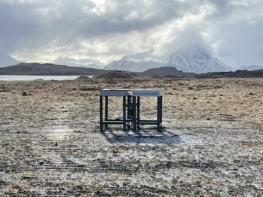An undiscovered belt of asteroids may exist very close to the Earth according to two physicists from Oxford University in the UK. Wyn Evans and Serge Tabachnik have carried out numerical simulations of the solar system to determine all the regions in which asteroids could remain in stable orbits. According to their calculations there are two unknown 'zones' in which the gravitational perturbations of the planets will not disperse asteroids. The first lies in a narrow band between the Sun and Mercury and the second is between the Earth and Mars (Nature 399 41).
Astronomers have known about an asteroid belt between Mars and Jupiter for nearly 200 years but it has only been in the past ten years that two other belts have been discovered. The Kuiper belt, a group of comets and asteroids beyond Neptune, was discovered through observations, while the region of asteroids between Neptune and Uranus was “discovered” in numerical simulations like those performed at Oxford.
Evans and Tabachnik simulated the gravitational behaviour of all the planets in the solar system over a period of 100 million years. They tracked the positions of 1050 particles out to 2.2 astronomical units – over twice the Earth-Sun distance – to determine if any of them remained in a stable orbit around the Sun. The simulations took four months on a network of 20 personal computers.
As astronomers had suspected, Evans and Tabachnik found that a collection of asteroids, nicknamed Vulcanoids, could exist in stable orbits between the Sun and Mercury if they were greater than 200 m in diameter. The Vulcanoids are so close to the Sun that their surfaces would reach temperatures that are hot enough to melt lead.
The second new region of stability exists very close to the Earth, between 1.08 and 1.28 astronomical units from the Sun. A search through the catalogues of near-Earth objects suggests that several recently discovered objects – such as 1996 XB27, 1998 HG49 and 1998 KG3 – may exist in this orbit.



